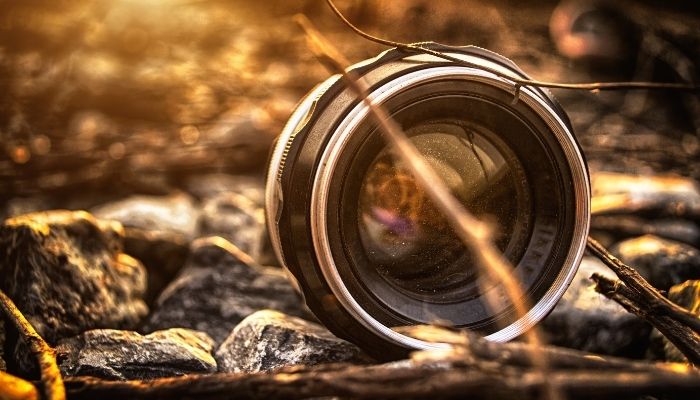

The small shiny black focusing ring at the front isn’t the best I have used, but it is definitely smooth (On a side note, When focusing back from close to infinity, I encounter a small bit of resistance in the lens, where it feels like it wants to stay there.

Rather than the rougher feel of the EF-S lenses Engineering plastic, Canon has opted for smooth black plastic, which to me, doesn’t feel right. The Plastic around the edges exudes cheapness.
It is better paired with a smaller camera, as the balance feels much better (to me anyway). The lens is a mere 130g, and when mounted on a larger camera body, feels like it isn’t even there. Depending on your skill level and time spent doing photography, you might be surprised or alarmed at this. Once you pull out the lens from the box, you will immediately notice the weight and build quality. Though, it does give the impression that the lens has more weight than it really does. The lens itself barely fits in the box, but then Canon have decided to shove a thick set of instructions in there. I can assure you, you will never find a box more cramped than the box that the 50mm f/1.8 mkII arrives in. It would appear that as well as reducing costs, Canon has become conscious of it’s effect on the environment. The first thing I noticed when opening the package was the actual size of the box. However, I do believe that I can give it a fair evaluation due to the amount I have used this lens. You will have noticed that I have stated that I have used it for less than a month, which is true, as I received it as a present for Christmas. Just a quick note, the price paid is in GBP, not dollars. Your camera and lens reviews are the foundation of this site.įeatured Review: Canon EF 50mm f/1.8 II “Nifty-Fifty” Lensīy Ben_Morrissey (Expert) Price Paid: £.80.00 from .uk If you’ve got a 50mm lens – Canon, Nikon, Sigma, or whatever – we need your review. Thanks to member Ben_Morrissey for this thoughtful and detailed Canon Nifty-Fifty lens review. The Nikon AF Nikkor 50mm f/1.8D lens is comparable in price and performance. If you’re a Nikon shooter you’re also in luck. It will also teach you to be a better photographer since you can’t rely on zoom to help you compose and frame. The Canon 50mm f/1.8 lens can be had for less than $100 US dollars, it’s got great optics and it’s an excellent low light lens. Introducing the 50mm 1.8 lens! It is small and compact, but it is a beast when it comes to quality, and at around $100-200 the price can't be beat! Both Canon and Nikon offer a "nifty fifty." They have recently also come out with a mirrorless camera 50 mm prime lens option as well! For this post we'll be showing you a Sony option, but there are many other options of lenses when it comes to mirrorless camera systems.I dug up this review of the Canon EF 50mm f/1.8 II “Nifty-Fifty” prime lens to show off what is arguably one of the best camera gear buys you can make. We love to share about what we call the "nifty fifty." Your BEST first investment would be a prime lens to get the best quality images. Most DSLR cameras will come with one or two "kit" lenses. Ideally, you want the sharpest, cleanest, lowest light shooting lens which would be a prime lens. The complexity of the zoom lens makes them a bit less sharp and they are prey to greater amounts of lens problems such as distortion, chromatic aberration and vignetting. You can "zoom" in and out from your subject. A prime lens typically has a larger maximum aperture so they perform better in low light situations, also creating a better depth of field (your subject in focus and the background blurred).Ī zoom lens is just as described. Which means you have to move closer or further away from your subject. There are two kinds of lenses: prime lenses and zoom lenses.Ī prime lens is a lens with a fixed focal length. This allows you to choose from a variety of different focal lengths. One advantage of most DSLRs is the ability to switch lenses. We get this question A LOT!! "What lens should I get for my DSLR camera?" Well, you are in the right place, friend! We are going to give you all the best advice on which lens would be the BEST first investment to begin documenting your family's life.


 0 kommentar(er)
0 kommentar(er)
